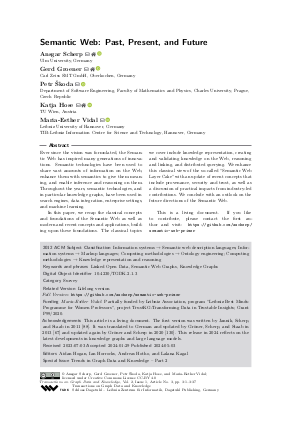@Article{scherp_et_al:TGDK.2.1.3,
author = {Scherp, Ansgar and Groener, Gerd and \v{S}koda, Petr and Hose, Katja and Vidal, Maria-Esther},
title = {{Semantic Web: Past, Present, and Future}},
journal = {Transactions on Graph Data and Knowledge},
pages = {3:1--3:37},
ISSN = {2942-7517},
year = {2024},
volume = {2},
number = {1},
publisher = {Schloss Dagstuhl -- Leibniz-Zentrum f{\"u}r Informatik},
address = {Dagstuhl, Germany},
URL = {https://drops.dagstuhl.de/entities/document/10.4230/TGDK.2.1.3},
URN = {urn:nbn:de:0030-drops-198607},
doi = {10.4230/TGDK.2.1.3},
annote = {Keywords: Linked Open Data, Semantic Web Graphs, Knowledge Graphs}
}

 Creative Commons Attribution 4.0 International license
Creative Commons Attribution 4.0 International license










